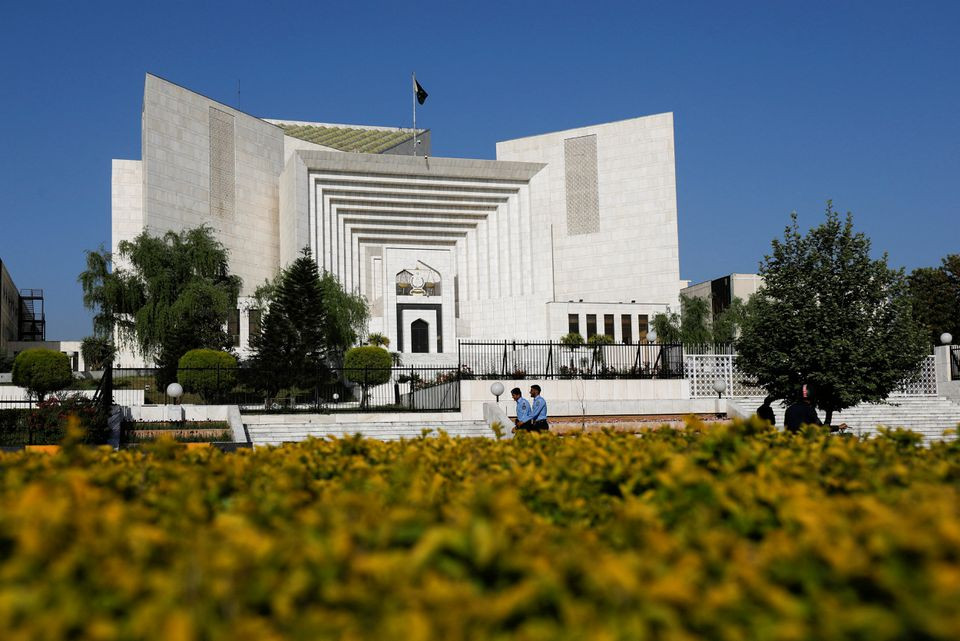
ISLAMABAD:
The Supreme Court on Friday raised questions on the locus standi of the interior ministry to file an application requesting the court to initiate contempt proceedings against Pakistan Tehreek-e-Insaf (PTI) Chairman Imran Khan over violation of the May 25 order, wherein PTI supporters were restricted from reaching D-Chowk.
A five-member larger bench, headed by Chief Justice of Pakistan (CJP) Umar Ata Bandial, continued hearing the contempt petition against the former premier.
At the outset of the proceedings, PTI lawyer Salman Akram Raja told the court that he would report on behalf of the party chief.
During the hearing, Justice Sayyed Mazahar Ali Akbar Naqvi asked the counsel of the interior ministry, Salman Aslam Butt, "how can the ministry file an application in the matter which is already infructuous?" The bench maintained that the contempt matter was between the court and contemnor.
Regarding the video evidence presented by the ministry to substantiate contempt against the ousted premier, the judge questioned whether a forensic of the video was conducted.
On the deposed prime minister’s statement that he “unknowingly” violated the apex court’s May 25 order, Butt said that he had a full record of the fact that the court order had reached Imran.
Read Govt, stakeholders lock horns over tenure
He asked the SC: "How many times would the top court allow Imran to give incorrect statements in this matter.” He claimed that the call to reach D-Chowk was given on May 24.
"I will also submit [the] USB along with the content. It contains statements of the PTI leaders,” he apprised the court.
The counsel said that Imran had misconstrued his answer to the apex court, adding that jammers could only be installed with the government's permission.
He, however, went on to state: “Even though there were jammers, the PTI leaders continued to use mobile phones.”
Justice Naqvi then questioned, “How should the Supreme Court determine who is wrong and who is not? The apex court is not a trial court that will record evidence.”
He stated that the matter on which the government's application was based had now become ineffective.
The ministry's counsel apprised the court that the government had filed a contempt of court petition to save the sanctity of the SC.
On this, Justice Naqvi told Butt to first argue the admissibility of the application, reiterating that the matter of contempt was between the court and the person who was accused of insulting it.
Read: PTI marchers to descend on capital on May 25
“If the reports of the agencies are available, the court can process them itself,” Justice Yahya Afridi said.
Justice Afridi questioned why the government needed to request initiation for contempt of court. "If the court considers it necessary, it will take contempt of court action," he added.
While giving remarks during the hearing, the CJP said that the apex court itself had asked for the information which had been brought forward.
He said that the long march was over when the larger bench had started the hearing. “It is yet to be examined who said what and what call was made.”
As the proceedings continued, the PTI lawyer apprised the court that Imran himself never came to D-Chowk. To which, Justice Bandial stated that the deposed PM himself did not come but had asked his workers to reach the area.
The CJP added that it had to be seen whether those arriving at D-Chowk were locals or part of the long march.
Also Read Govt still unable to pick new AGP as SC hears high-profile cases
“Let me make it clear that contempt of court proceedings is not for punishing anyone. Contempt of court action is to enforce court orders,” the CJP stated.
In his remarks, Justice Ijazul Ahsan said that the PTI's intention was to come to D-Chowk and that the party had assured the court to clear out the roads to the venue.
“After clearing the way, [the] PTI reneged on its assurance and came to D-Chowk,” Justice Ahsan added.
However, Justice Ahsan noted that Imran had not directly given any assurance to the apex court, saying that it had to be proven that the assurance to the top court was given on the instructions of the party chief.
“If there is any misrepresentation, it will be on behalf of [lawyers] Babar Awan and Faisal Chaudhry,” Justice Ahsan added.
Justice Naqvi then told the interior ministry's counsel to explain if D-Chowk was a restricted area.
“D-Chowk is in the red zone where protests are not allowed,” Butt told the court, requesting it to analyse the PTI's past.
He stated: "Back in 2014, they [had] paralysed the SC and parliament by staging sit-ins on Constitution Avenue in the heart of Islamabad’s heavily fortified red zone, which includes the Parliament House and the Supreme Court building, and [had] blocked all kinds of traffic from the main avenue."
However, Justice Naqvi remarked that the court would not be affected by what happened in the past.
The ministry also submitted a written reply to the court, according to which PTI General Secretary Asad Umar had reached Imran on a helicopter during the long march and had given an assurance to the court at one o'clock.
It maintained that after the assurance, when participants were asked to reach D-Chowk, Umar was standing with Imran.
“What is the proof that Asad Umar informed Imran Khan about the court order?” Justice Naqvi questioned.
He stated that if the government wanted criminal action, it should also understand its requirements.
Subsequently, the court adjourned the hearing of the case till next week.

















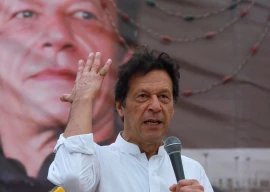
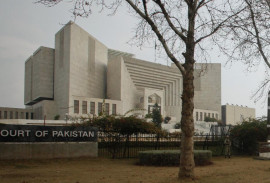
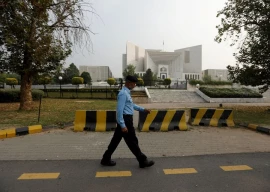
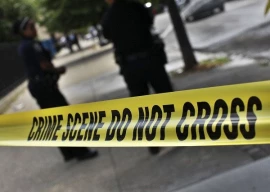

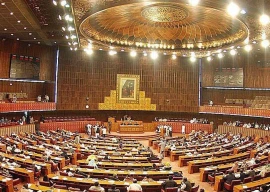

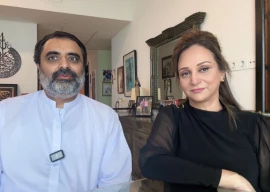



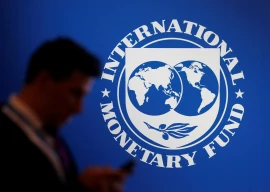





















COMMENTS
Comments are moderated and generally will be posted if they are on-topic and not abusive.
For more information, please see our Comments FAQ